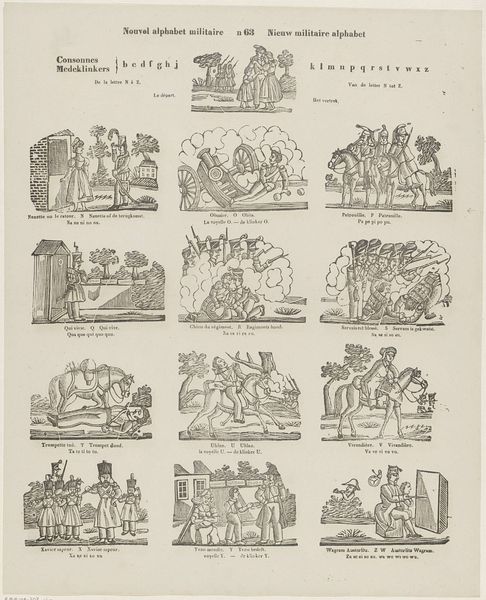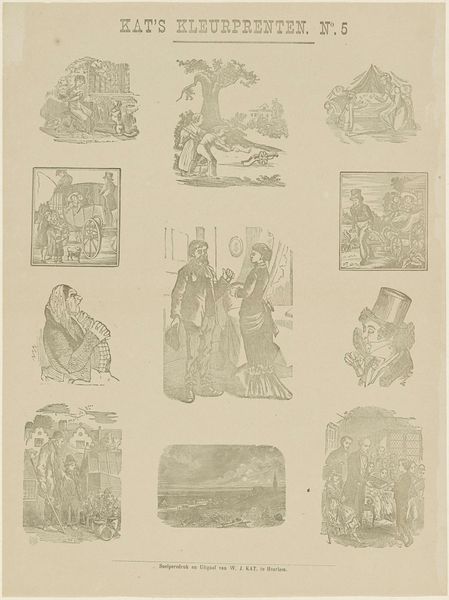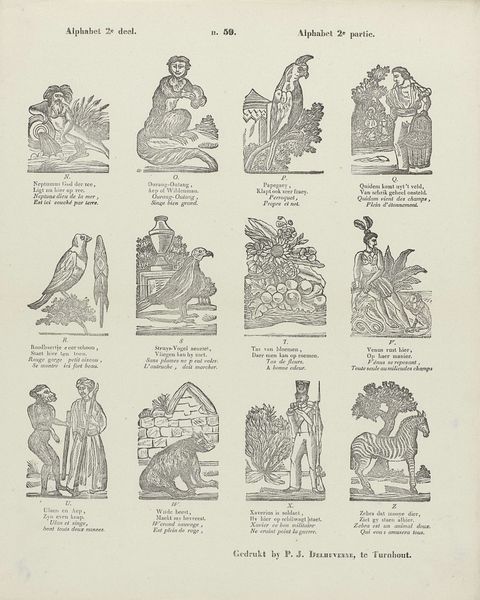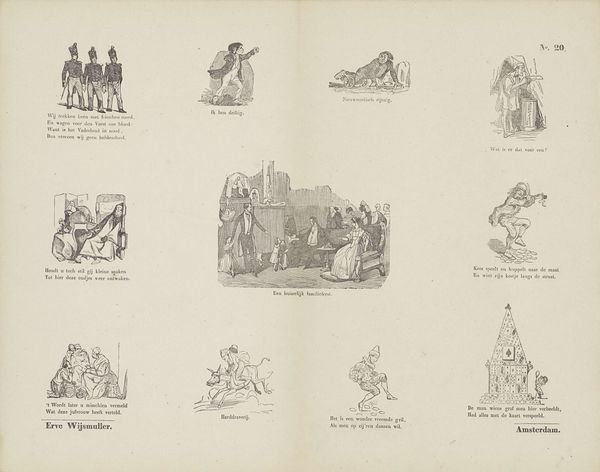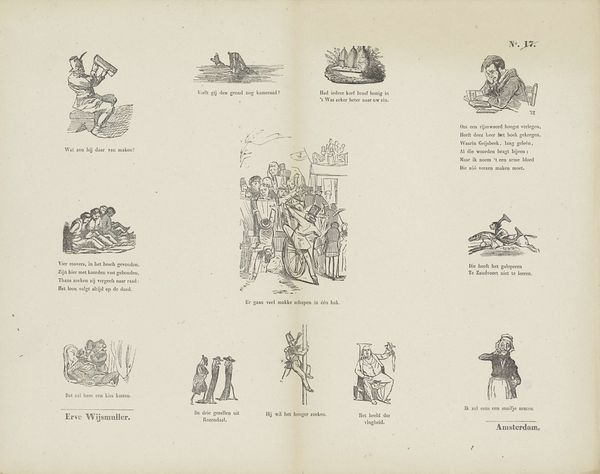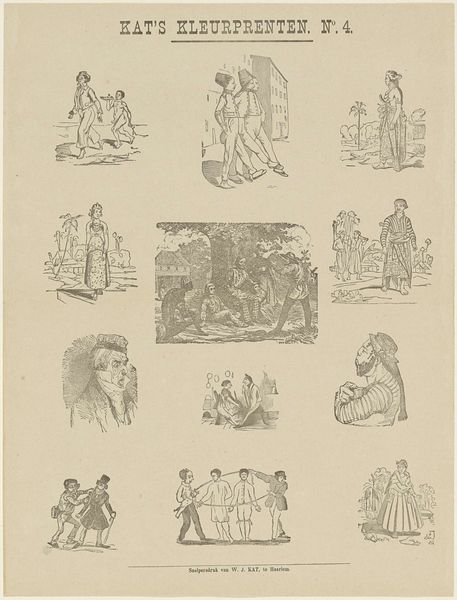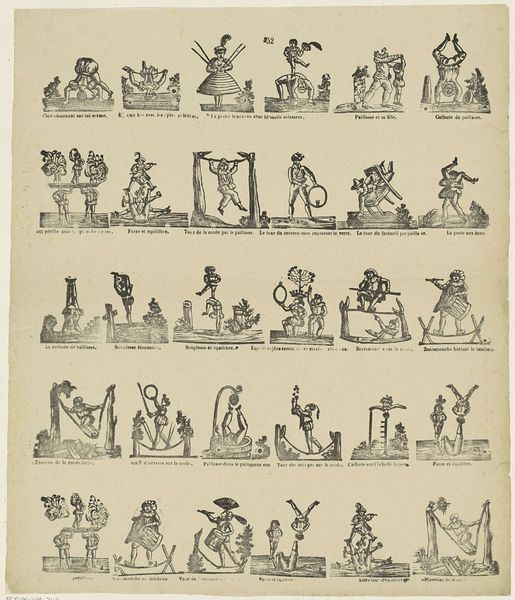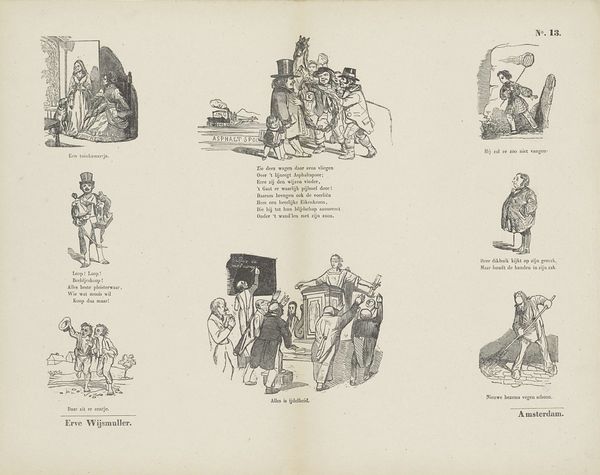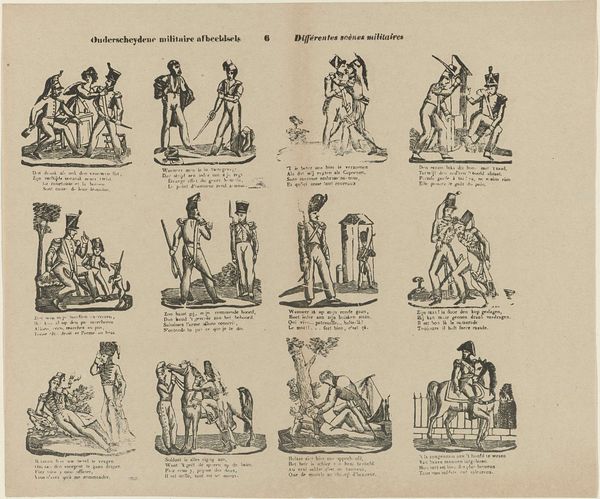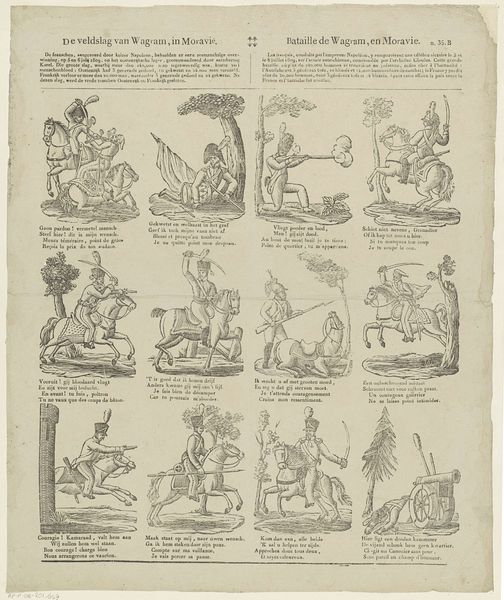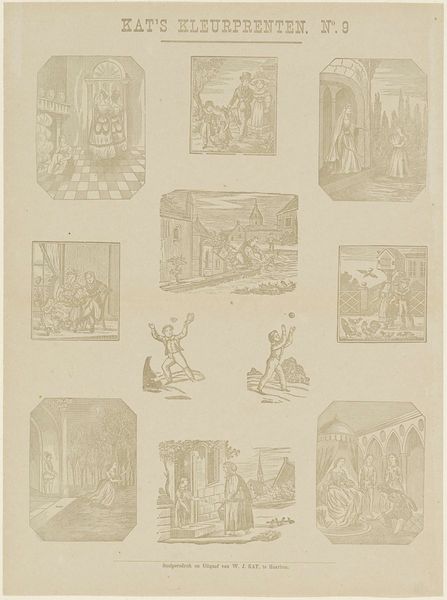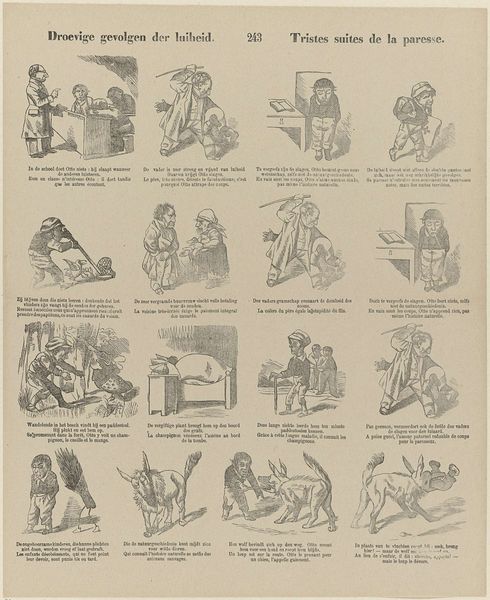
print, engraving
#
comic strip sketch
#
quirky sketch
#
narrative-art
# print
#
pen sketch
#
figuration
#
personal sketchbook
#
sketchwork
#
pen-ink sketch
#
comic
#
pen work
#
sketchbook drawing
#
storyboard and sketchbook work
#
sketchbook art
#
engraving
Dimensions: height 381 mm, width 340 mm
Copyright: Rijks Museum: Open Domain
Curator: Let's talk about this engraving called "Don Quichot", attributed to M. Hemeleers-van Houter, likely created sometime between 1827 and 1894. It’s currently held in the Rijksmuseum. What's your first reaction? Editor: My first thought is: so much narrative, compressed into one sheet. I see these tiny, bustling scenes, almost like frames from a comic strip. The linework is really dense in places, giving some figures a rather stark, almost rough quality. Curator: Exactly. The entire piece presents twelve panels, chronicling episodes from Cervantes' "Don Quixote." It is interesting to consider this work within the burgeoning print culture of the 19th century, and to think about who might have purchased this sort of sheet. These would have circulated fairly widely, increasing the accessibility of complex narratives to larger audiences. Editor: And I'm drawn to that distribution. Engravings are a reproductive medium, which is so interesting when you have scenes about the fictional adventures of Don Quixote being mechanically reproduced and shared! It completely divorces art from ideas around uniqueness, shifting it toward mass culture and information. What paper would they have printed on, I wonder? Was there a skilled workshop producing it? Curator: Good questions. Given the period, we can assume relatively inexpensive paper stock, prioritizing accessibility over longevity or archival quality. And you’re right about the shift in art’s purpose—this isn’t about a singular artist’s genius but a broader cultural project to disseminate narratives. Look at how the different panels engage varied segments of society by deploying images of Don Quixote and offering different ways of relating to social ideals and shared imagination. Editor: I see your point about wider access influencing the material choices. Looking closely, the mark-making is straightforward; functional rather than virtuosic. The engraving emphasizes clear storytelling above stylistic flourish, in service of its broader reach. It prompts me to rethink value; not necessarily tied to precious materials, but to its ability to educate and distribute ideas. Curator: And that reminds us that art always operates within a network of social practices. A piece like this opens a window onto how narratives circulate and gain meaning within society. Editor: It all goes back to considering who made it and for whom—essential questions that material concerns bring into view.
Comments
No comments
Be the first to comment and join the conversation on the ultimate creative platform.
